Pablo Goldbarg is the founder of US-based Catador Itinerante, one of the new breed of independent bottlers translating the Scottish model in new and interesting ways. For Catador Itinerante, that means being exclusively dedicated to bottling world whiskies. I recently spoke with Pablo about Catador Itinernante, their whiskies, and where he sees his company going in an ever-changing industry.
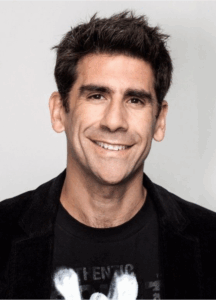
You’re an independent bottler applying the Scottish model to distilleries from around the world. How did you decide upon this business model? What was your whisky background prior to Catador Itinerante?
I started like many others, first as a consumer, then as a collector. Through tastings and bottle-share nights I became deeply involved in the whisky community, and while watching brand ambassadors like David Blackmore share their stories and passion, I felt the industry calling me.
I was fascinated to discover that distilleries such as Amrut in India and Kavalan in Taiwan could produce whiskies just as solid and complex as the Scotch whiskies I admired. They had their own personalities and flavor profiles that felt familiar yet distinct, raw, and exciting. Seeing relatively young distilleries around the world emerge as serious contenders was inspiring and made me want to be part of that global movement.
Around the same time, I discovered independent bottlers. I often say it is a one-way trip because it opens a door to cask types, ages, and ABVs that are hard or impossible to find in core ranges, from single grains to closed distilleries. For whisky lovers, it changes everything. In 2019 I started a Spanish-language blog to express myself in my native language, and soon after, a podcast, currently in its sixth season. That was when the idea of Catador Itinerante began to take shape.
I realized I could create something different by connecting world whiskies and independent bottlers in one project, so I chose to focus on showcasing world whiskies. As a small newcomer, competing directly with legendary Scottish bottlers would also have been unrealistic.
When did you found the company and where is the company located? How has that influenced and/or affected your business?
I registered the name and created the LLC in 2019, the same year I published my first blog articles. I am based in Cambridge, Massachusetts, and I consider myself lucky. The greater Boston whisky community is incredible, knowledgeable, and welcoming. Local stores really care about their customers and foster a strong sense of community. The tastings here can blow your socks off, especially after the official event ends and guests start sharing bottles they have brought from abroad.
When I finally released my first editions, I had already spent two years working at Norfolk Wine & Spirits, which helped tremendously. I am very grateful to Bikram Singh, the owner of Norfolk Wine & Spirits, and to the Norfolk Whisky Group. They treated my whiskies as if they were their own: like masterpieces. Seriously, they were actually honest, and that honesty is exactly what you need to grow and succeed.

How have you found the distilleries with whom you work, and how have you built your relationships with the distilleries with them?
I began with months of research, methodically compiling a database of distilleries from A to Z around the world. Then I emailed every one of them. It is no coincidence that my first releases came from distilleries among the few who replied and showed genuine interest from the start. Fortunately, both happened to produce excellent whisky. Many emails bounced back, and some websites looked like they had not been updated since the 1980s, complete with visitor counters, “page under construction” notes, and last releases from decades ago.
In 2022, when I turned 50, I used that milestone birthday as an excuse to take a leap of faith and travel to Europe to visit some of these distilleries in person. Or maybe I used the business plan as an excuse to celebrate my birthday with plenty of whisky. The truth is somewhere in between. My birthday happened to fall right between Whisky Live Paris and The Whisky Show in London, which was perfect timing. Between those two major events and the road trips in between, with gorgeous sunsets along the way, I met many distillers who loved the idea of a world whisky bottler. I often joked, “Why didn’t you reply to my emails?” Meeting them in person was the best move I could have made.
When you approach new distilleries have they been receptive, or do you have to explain the concept of independent bottling and sell it to them? Have you had any challenges sourcing casks?
In general, they have been very receptive. I also choose one distillery per country, which often makes it a matter of national pride, especially where several producers exist. I rarely have to explain the concept of independent bottling, but sometimes I clarify that I am not simply sourcing their whisky. What I seek is a transparent collaboration.
If a distillery does not want me to use their name, it is not the right partner for me. I prefer dealing directly with distilleries rather than brokers. Ideally, I visit them myself to meet the key people, ask questions, observe the process, taste the whisky in the best possible setting, and take in the atmosphere. Understanding their environment, the town, their people, and the climate is essential to my company’s vision: a window to the world.
My last two editions were from Zuidam in the Netherlands. That experience aged me four years in four months, not because of a high angel’s share in the region, but because of tariffs and import uncertainty. From acquiring the casks in March to finally receiving them in Boston at the end of July, I did not know whether I would pay 10 percent or 30 percent in duties. That difference could make or break a release. Fortunately, it all worked out.
Where is Catador Itinerante distributed? Are the distilleries you bottle also distributed in those markets, or are you opening up wider recognition and potentially new markets for them?
Currently, I am distributed in Massachusetts and New York and exploring opportunities in Illinois, Florida, and California. I also partnered with DRINQY.com, an online platform with an excellent selection that allows my whiskies to reach customers in states where I am not yet in stores. Some of the distilleries I bottle have never been distributed in the United States, or are not currently available here, so Catador Itinerante helps open new markets for them.
I also become their best ambassador, and not on payroll, which makes it quite a bargain. I share their stories, sometimes even using their presentation materials during tastings. I encourage people to visit their distilleries, their towns, and their countries. There is no better advocacy than that, and I see it as added value in every collaboration.
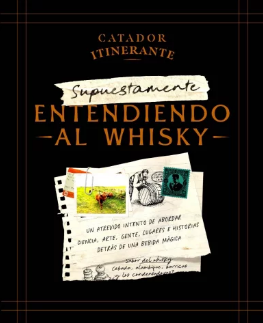
What distilleries have you worked and what countries have been represented? When did you release your first bottling, and what was it? How many releases have you had to date?
My first two editions were single malts from Broger in Austria, released in mid-2024. It is practically a family-run distillery that produces about 1,000 liters per year. Edition 01 is a 13-year-old whisky, aged four years in virgin Limousin oak and nine in Madeira. Edition 02 is a 10-year-old fully matured in Oloroso sherry. The barley for this one was dried with beech wood smoke, and it is bottled at 71.6 percent ABV, not for the faint of heart. They are complex, layered, and a little wild: right hook, left hook.
For the next two, I went with more approachable single malts from Slyrs in Bavaria, released in January 2025. Slyrs is Germany’s best-selling whisky and one of the few distilleries in the country, among hundreds, dedicated exclusively to whisky production. Edition 03 is a seven-year-old finished in Sauternes for four years, and Edition 04 is a nine-year-old finished in Pineau des Charentes for six years. Both have a gorgeous nose and a candied flavor. I would not mind wearing Edition 03 on my wrist and neck.
My latest releases are from Zuidam in the Netherlands, the makers of Millstone, which earned Best Rye Whisky in the World for three years in a row. Patrick van Zuidam has decades of experience and works with ultra-long fermentation, local barley, traditional windmills, and a mix of distiller’s and brewer’s yeast. Edition 05 is an eight-year-old single malt matured in first-fill Oloroso sherry, and Edition 06 is a nine-year-old 100-percent rye matured in virgin American oak. One hundred percent rye is notoriously difficult to mash because it can turn into a sticky paste, but Zuidam found a technical solution with wider heat exchanger plates. They sacrifice yield for flavor and tradition, and that dedication is part of why I wanted to showcase them.
How do you approach your whisky? Are you buying new make/young casks and aging, or older casks and finishing? Do you experiment with unusual finishes? How do you decide what casks work with which whiskies?
For now, I only acquire full casks that are ready to bottle. All my editions are single cask, non-chill-filtered, natural color, and bottled at cask strength. I do not blend, finish, or recask, not even add water. In the future, I might explore additional finishing in the United States if the right distillery is open to experimentation, but at this stage I present exactly what the distillers intended to make.
I believe I have to cater to people with different palates, as whisky evokes different memories for everyone. It is a feast for the senses. Still, I never bottle anything I would not love drinking myself. Part of my selection process includes sharing samples with people I trust and re-tasting them on a quiet weekend, by myself, while watching a movie. That is the final green light.
My cask choices are guided by how each edition fits within the broader narrative. Slyrs followed Broger because I wanted to offer contrast, a moment to breathe after two intense releases, before riding the next high wave with Zuidam.
As I said in the Independent Spirits docuseries you co-produced, I see independent bottling as a form of art. The bottler is a curator, much like a gallery owner. Each whisky is a distinct piece of art, and by presenting it with transparency and respect for the maker, you honor the craftsmanship and create new meaning when these whiskies are seen together.
Being a fairly new company focused on whiskies that may not be known well outside of their home markets, how have you approached getting into the stores? Have retailers and whisky drinkers been receptive?
I started naturally with Norfolk Wine & Spirits after spending a long time working there and building friendships. After my first official tasting, I began visiting stores, calling, emailing, and organizing more tastings. Because my whiskies are limited and rare, I avoid large chains and focus on shops that truly appreciate whisky. I look for places with passionate staff and a loyal whisky crowd. I have held events at Julio’s, Burlington, Ball Square, and other stores that value off-the-beaten-path whiskies and community. I truly appreciate these places where I also shop or attend tastings, and I always encourage beginners to support stores that invite you to be part of something bigger.
For whisky drinkers, it is all about the experience and the tastings. I love seeing which bottles surprise people and how favorites change from one event to another. When I recently presented all six editions together, there was no clear favorite. That gave me confidence that Catador Itinerante is not just a business, but a vision.
A customer once told me, “There is a right way and an easy way. You are doing it the right way.” That made my day. I have learned a lot from Bikram at Norfolk, John and Lorri at Raising Glasses, my friends at Single Cask Nation or Found North, and from every consumer conversation. The whisky industry is by far the best I have worked in, because passion is not a cliché but something genuinely shared and enjoyed.
I also published a Spanish-language whisky book titled Supuestamente entendiendo al whisky (“Supposedly Understanding Whisky”), the first in a trilogy that includes “Supposedly Traveling for Whisky”, which will feature chronicles from my trips, and “Supposedly Talking about Whisky”, based on podcast interviews. These books explore what I call the five elements of whisky: art, science, people, places, and stories. I use “supposedly” because none of us are absolute experts, and whisky always keeps a beautiful element of mystery.
There have been signs that the whisky industry as a whole has entered a downturn. Has that been the case for you? If so, how do you plan to face those challenges, and if not, why do you think that has not been the case? What is your perspective on the state of the industry?
I recently spoke with a brand ambassador whose distillery slowed production, which is not necessarily bad news, given that some distilleries are shutting down. I believe the big players bear much of the responsibility. During the pandemic, the industry saw explosive growth after decades of steady progress. Many producers expanded too quickly, investing in massive visitor centers, endless limited editions, and steep price increases. Now the market has more supply than demand, and new drinkers are shifting toward beverages with lower alcohol content.
Yes, people are buying less, and I have felt it at my tastings. But I believe that distinctive, story-driven products like mine will always find their place, especially when they deliver on flavor, because empty stories are never enough. With the rapid advance of A.I., there is also a growing need for curators and for real experiences. I may be pushing myself to stay optimistic, but as long as Catador Itinerante represents personal growth in all its forms—the books, the podcast, the single casks, and now immersive private tastings—I will be ready for whatever turmoil comes. I have been doing the groundwork for some time, so hopefully I am prepared for the A.I. takeover, as long as it does not come in the shape of Terminators.
Consumers will always find big brands and discounts during downturns, but the true hidden gems will become rarer. That is where I come in. My Edition 01 from Broger, for example, spent an unusual nine additional years in Madeira because the master distiller felt it kept improving and was in no rush to hit the market. That kind of patience is a luxury larger distilleries under financial pressure cannot always afford. When it was finally bottled, they reused the cask to make furniture. That is the kind of whisky and story worth sharing.
A downturn also brings opportunity. Some distilleries facing financial challenges may sell casks at lower prices, although retailers might tighten their selections. The reality is that margins are thin, and as a one-man operation still reinvesting every dollar, this is harder than I expected. Yet I remain hopeful. If the moment comes, it may be time to launch a membership with club-exclusive releases. Whatever comes next, I will do my best to adapt.
Can you tell us anything about your upcoming releases? Where do you see Catador Itinerante as a company moving forward?
I was recently a guest on the One Nation Under Whisky podcast. Josh Hatton asked where I see myself in five years, and I joked that he probably meant five days. That was during the tariff chaos before the Zuidam casks arrived.
My entire lineup is solid, but the truth is that these recent Dutch whiskies have set the bar very high. The labels even say, “It’s a Millstone!” in recognition of their international prestige, including the title of Distiller of the Year (Rest of the World) at the Icons of Whisky Awards 2025. This is both exciting and challenging.
I have been in touch with distilleries in Finland, Norway, Switzerland, and Denmark, and it is also time to branch out to Asia. I mentioned Amrut and Kavalan, but I also love M&H in Israel and I am curious about Ki One in South Korea. I even visited a distillery in the Argentinian Patagonia that I dream of bottling one day, especially as an Argentine myself. My plan is to continue releasing two styles per distillery per country.
It is not easy to find whiskies that truly stand out, the kind the Norfolk Whisky Group or Drammers members would recommend to each other, but that is the goal. This project is a window to the world through great whisky. I want Catador Itinerante to remain a curated gallery of rare spirits. Right now, I can see one full wall of that gallery taking shape, and it looks beautiful. I dream of hosting a full exhibition one day. The 375 ml bottles might seem unusual, but they make discovery more accessible. They help democratize a world that often feels reserved for only a few.
Thanks again to Pablo for taking the time to speak with Whiskey Network.
Catador Itinerante independently bottles world whiskies for the US market. Some of these whiskies are not even known, let alone available, to American audiences, so Catador Itinernante truly opens the world for drinkers and distilleries alike.
Reviews
Alongside my interview with Pablo Goldbarg of independent bottler Catador Itinerante, I had the good fortune to try all six of the company’s releases to date. For those of you who have yet to read that interview, Catador Itinerante is a US-based independent bottler dedicated exclusively to world whiskies. Catador Itinerante is currently distributed in Massachusetts and New York, but exploring opportunities in other states. For many of these distilleries Catador Itinerante is the first presence in the US market.
Catador Itinerante describes itself as being “inspired by itinerant theater companies, whose journeys meandered without predetermined paths, my own odyssey is a quest to unearth hidden treasures to be admired abroad. A whisky collection. A window to the world.” That purpose is reflected in the bottle itself, not only because that description appears on the back label but also because the front label design leans heavily into that “travel the world” sensibility. The bottling information is laid out in an old-fashioned ticket format, with big bold official text for the distillery, country, age statement, and vintage and “handwritten” fill-in-the-blanks for all other pertinent data. On the left-hand side is an old-school postage-like stamp for the country and edition. Completing the travel feel is a “Catador Itinerante I.W.W.” logo “inked” across the perforations of the country stamp into the body of the ticket as if the bottle has just gone through passport control.
All in all, the presentation shows a completion of concept from product to packaging that emanates shelf appeal.
But what about the whiskies? The substance does indeed hold up to the style. To date Catador Itinerante has released six editions, the first two of which came out in mid-2024. The releases are grouped into three pairs of bottlings from the same distillery, with Editions 1 and 2 featuring Austrian distillery Broger, Editions 3 and 4 the German distillery Slyrs, and Edition 5 and 6 the Dutch distillery Zuidam. As such, I sipped the whiskies in their edition pairs to compare and contrast the different expressions of each distillery.
Edition 01: Broger 13-year-old
The first Catador Itinerante release is an unpeated Austrian single malt aged in virgin French Limousin oak and Madeira casks. The whisky is a deep color with a nose of raisins, burnt brown sugar, moss, figs, and candied orange. Initially the whisky tastes of dark chocolate, cabernet, and plum on top of a velvety mouthfeel before the 62.1% ABV delivers some heat mid palate. The long finish brings back the dark chocolate but with a bit more cocoa flavor. Adding water increases the orange on the nose, with the palate becoming fruitier and spicier.
Rating: 3.75/5

Edition 02: Broger 10-year-old
Despite being a medium smoked single malt (type of smoking unspecified) to Edition 01’s unpeated, there is no mistaking that these two whiskies originate from the distillery. Color is a shade lighter, more of an orange-bronze than copper, while the nose wafts of vanilla, spice, and morello cherries. Edition 02 clocks in at a whopping 71.6% ABV and that alcohol heat hits the second liquid hits the tongue. The palate dances through orange, tea, spice, and a hit of salinity that gives way to a woody, grassy finish which comes on strong but then lingers long and subtle. Water makes the nose creamier while adding apple brandy and a hint of cocoa to the palate.
Rating: 3.5/5
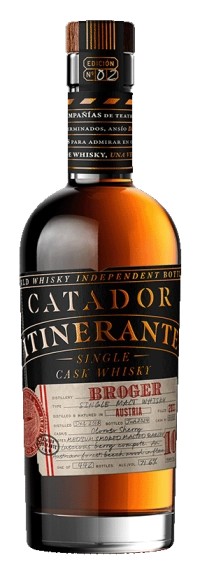
Edition 03: Slyrs 7-year-old
So unlike the other distilleries represented in Catador Itinerante’s first six editions, I was already familiar with the Bavarian distillery Slyrs. While in Germany this summer, a friend of mine gave me a bottle of Slyrs Single Malt Classic. Both of us had the same opinion: the whisky was one note, albeit a good one note that showed the potential for what Slyrs could be.
These independent bottlings realize that potential.
At seven year the Edition 03 Slyrs single malt is a young whisky that definitely tastes its youth. Aged in 2nd fill American Oak and Sauternes casks and bottled at 55.4% ABV, the whisky is pure goldenrod in color with a nose of the bananas foster and citrus rind. Early heat gives way to that Sauternes influence, with honey, lemon verbena, and baked apples on the palate and a sweet pear finish that eventually transitions to vanilla cereal. Water oddly enough makes the nose burn hotter, but the palate does mellow, exhibiting creamy lemon chiffon accents.
Rating: 3.75/5
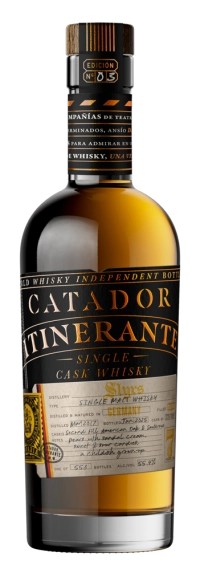
Edition 04: Slyrs 9-year-old
Although the Slyrs Editions 03 and 04 don’t come across quite so tightly related as the Broger releases do, that they share a family tree is still apparent, especially to someone familiar with an official bottling. Despite having aged only two additional years, this 9-year-old single male from new American oak and Pineau des Charentes barrels (ABV 55.9%) drinks far more mature than its younger cousin. The amber liquid has aromas of mixed berries, nutmeg, and a hint of ginger. The palate is sweet but delicate, full of peaches and apricot along with some salinity and orange rind, while the finish is all peaches and cream. Water intensifies the berries on the nose while minimizing the spice, while the flavors actually become less delicate and more mandarin. This is a complex and delightful dram.
Rating: 4.0/5
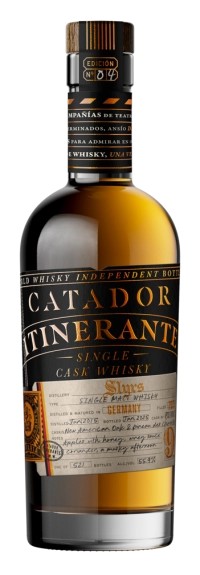
Edition 05: Zuidam 8-year-old
Catador Itinerante’s latest two releases come from Dutch distillery Zuidam. The ochre-hued 8-year Edition 05 single malt was aged in 1st fill Oloroso Sherry casks and bottled at 54.4%. Redolent of brandy, bread, and nectarine, the palate offers up black cherry and rich wine notes before giving way to burnt orange and sugar and a medium length finish of raisins. Water adds green apple to the nose and accentuates the dark berry flavors.
Rating: 3.5/5

Edition 06: Zuidam 9-year-old
Edition 06 finds Catador Itinerante branching into another category: rye. To me this is a love-it-or-hate-it whisky. I have always found international rye releases to have a very different character than American/Canadian rye, but since the vast majority of our rye experience comes from those two countries, international rye cuts against those expectations. Personally I love it. Reddish-orange in color with a truly unique nose of pine forest and a hint of sweet pastry, the palate delivers on that pine with added lemon, minerals, and salinity. The rye really comes through on the long, strong finish, alongside spice and grass. Water changes the nose to fruit candies and makes the rye even more prominent on the palette with some vanilla on the finish.
Rating: 4.0/5

I have had the opportunity to try a wide variety of world whiskies, even such oddballs as the Floki Sheep Dung Smoked Reserve. With so many having come about in the surge of interest over recent years, my most persistent criticism is the same as the aforementioned Slyrs official bottling: while they exhibit strong potential and may be enjoyable now, they aren’t quite all they could be… yet. Like any good independent bottler, Catador Itinerante reveals other dimensions than those apparent in the distilleries’ official bottlings, even realizing that full potential. Together the OBs and the IBs paint a whisky’s complete picture, and I am excited to see where Pablo goes from here.




